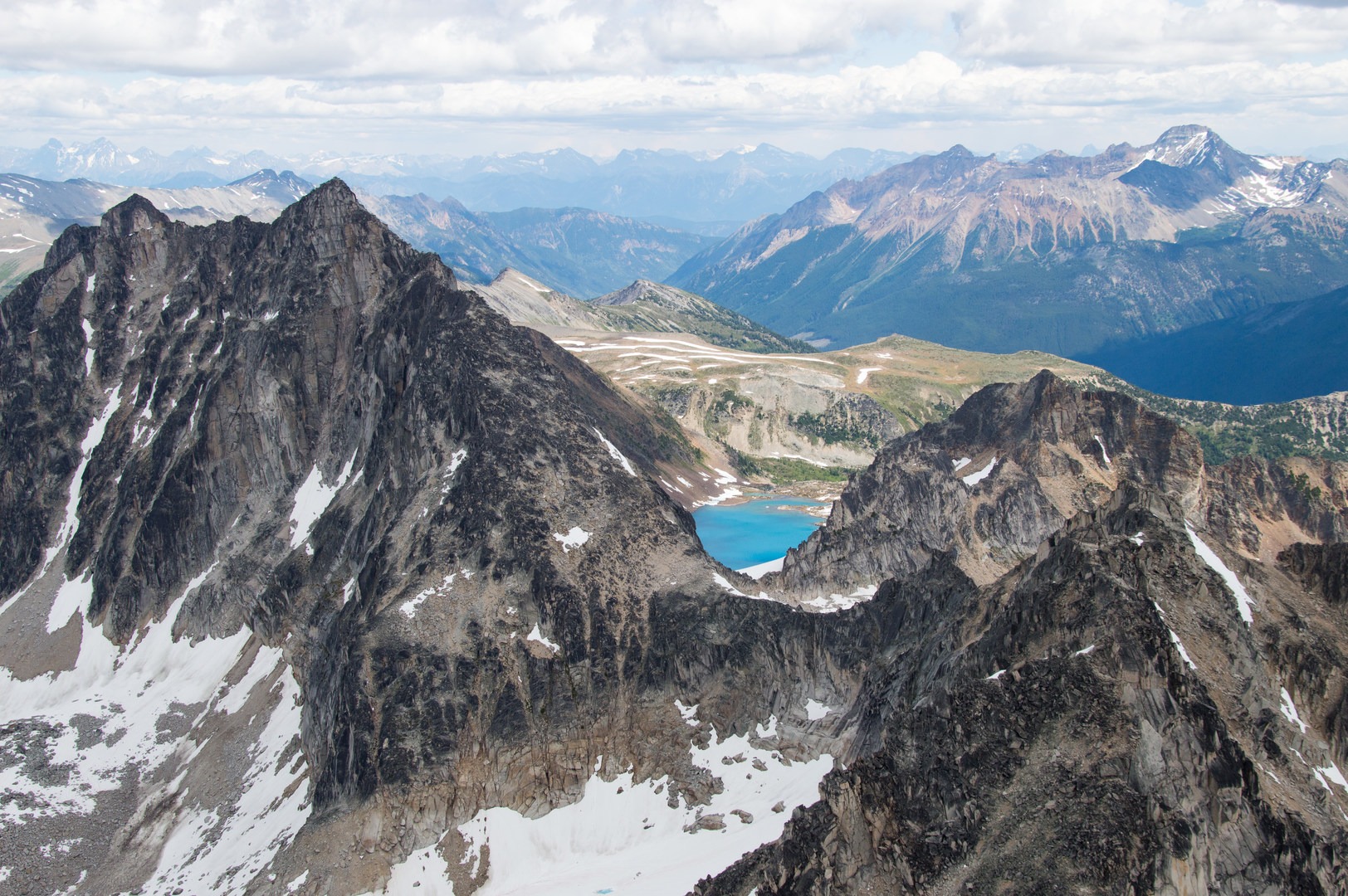You are here
This is the most classic route on one of the most classic peaks in North America--truly a must-do in the Bugaboos. Northeast Ridge is top-notch in all categories of aesthetics, movement, and rock quality. Attracting all comers from around the world, it makes for a two-day ordeal for some and a morning romp for others, but is sure to please climbers of any experience level from intermediate to advanced. It's a fairly committing route (Grade IV) with tricky routefinding, so don't be deceived by the 5.8 rating. Many a party has underestimated the climb and spent unplanned nights on the spire.
For those accustomed to navigating alpine rock and comfortable with moving quickly, the route is doable in part of a day. An alpine start is always recommended, however, because of the likelihood of crowds. Expect to wait in line on the approach, belays, and especially on the descent. For a better idea of what to expect, talk to people in Applebee Camp the night before about their plans. If it seems many are aiming for Northeast Ridge, you may want to save it for another day.
To reach the climb, hike straight toward Bugaboo Spire from Applebee Camp. The terrain is scree and low-angle snowfields that don't require any special equipment under normal conditions. You should carry an axe and crampons for the descent, however. Before reaching the base of the spire, turn right (north) to the rock wall that forms the Crescent/Bugaboo Col. Scramble up this fourth and low-fifth class terrain to top out the col and cross over to the base of the ridge on Bugaboo. Some parties choose to rope up for the approach scramble, but there is not much protection. The routefinding is not too difficult in the light, but it is very tricky before the sun comes up. Consider scouting the day before you climb.
From the base of ridge, the general line is straightforward enough. Follow the crest to the top in a series of fun slabs, cracks and chimneys that will keep you smiling the whole way. There are plenty of minor variations and many different ways to pitch it out with purely natural anchors and protection. Ledges are abundant, and the rock is excellent. If ever you run into rotten or lichen-covered rock, or significantly harder moves, you have probably slipped off route. In that case stop, look around, and rejoin the path of least resistance. Gaining the summit requires a few puzzling moves over blocks, but taking time to analyze options will reveal the easiest solution.
In some ways the crux of the route is the descent. From the north summit you must cross varied terrain on the summit ridge, which includes some short knife-edge sections with sparse protection, to the south summit. From there, descend via the Kain Route. This involves a frustratingly long and complex series of rappels and downclimbs. If you are not familiar with the Kain Route, navigation will be difficult. Consider climbing this easier route first, or plan on following another party down. Merging with climbers of the mega-popular Kain Route for the descent inevitably creates traffic jams. Try to be courteous and strategic if you choose to maneuver around other parties.
The last bit of the descent is the Snowpatch/Bugaboo Col. This is where you will want an axe and crampons. If the col is filled in, downclimbing the snow is easy enough. If conditions are poor and the top of the col is loose scree, or if you are otherwise uncomfortable on the snow, look for rappel anchors at the base of a large boulder near the top. One rappel should land you in less-steep terrain where you can hike or glissade to the base and cross the snowfield back to camp.
This route is typically climbed when mostly snow-free, which doesn't usually happen until summer. July through August is the most reliable window for good conditions, but thunderstorms are frequent during this time of year. Bailing from the route is very difficult, so watch the weather closely and be prepared.
Logistics + Planning
Current Weather: Powered by Dark Sky
























Comments
Sign In and share them.